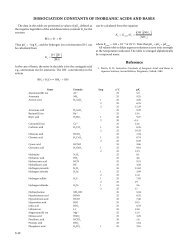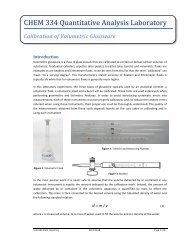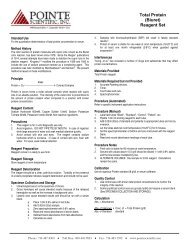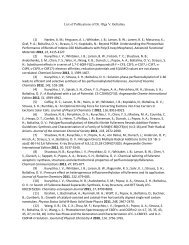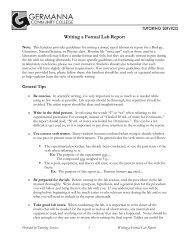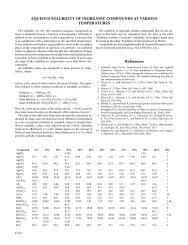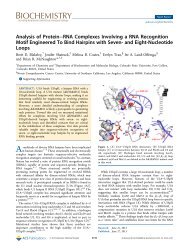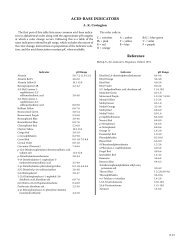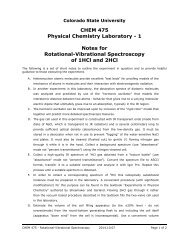8453 UV-visible system - operator manual.pdf
8453 UV-visible system - operator manual.pdf
8453 UV-visible system - operator manual.pdf
- No tags were found...
You also want an ePaper? Increase the reach of your titles
YUMPU automatically turns print PDFs into web optimized ePapers that Google loves.
Good Measurement PracticesGeneral ConsiderationsOptical Specifications of CellsThe accuracy of the readings of a diode-array spectrophotometer is verysensitive to spatial shifts of the analysis light beam. Cells having non parallelopposite faces, or so called wedge shaped cells, lead to a spatial shift of thelight beam (see Figure 4). Therefore, the opposite cell walls illuminated bythe analysis light beam have to very parallel. The parallelism is measured interms of the angle between the two opposite cell walls. We recommend to use10 mm path length cells with an angle which is below 0.1 degrees of an arc.Figure 4Shift of the Spectrophotometer Light Beam due to non Parallel Cell WallsLight Beam InLight Beam inParallelParallelCell Cell Walls WallsLight Light Beam Beam Out outLight Beam InLight Beam inNon-parallelCell Cell WallsLight Light Beam Beam Out outApertured CellsIn applications where sample volume is limited, apertured or microcells areused. The width of these cells is reduced to reduce the volume and the blankpart of the cell must be blackened to avoid unwanted transmission andreflection through the side walls. If the side walls are not blackened theresult will be poor photometric accuracy and, if different concentrations aremeasured, poor linearity.The disadvantage of apertured and microcells is that part of the light beam isblocked. Not all the light passes through the sample and there can be someloss in sensitivity. See Figure 5 for recommended and Figure 6 for cells youshould not use with the instrument.44




